Learn How to Make a Roux for gumbo so you get the best rich Cajun flavor. Simply whisk together flour and either melted butter or oil, then simmer until you achieve a white, blonde, light brown, or dark color for all of your thickening needs. Stir this into recipes like cheese sauce for macaroni and cheese, or gravy to top biscuits.
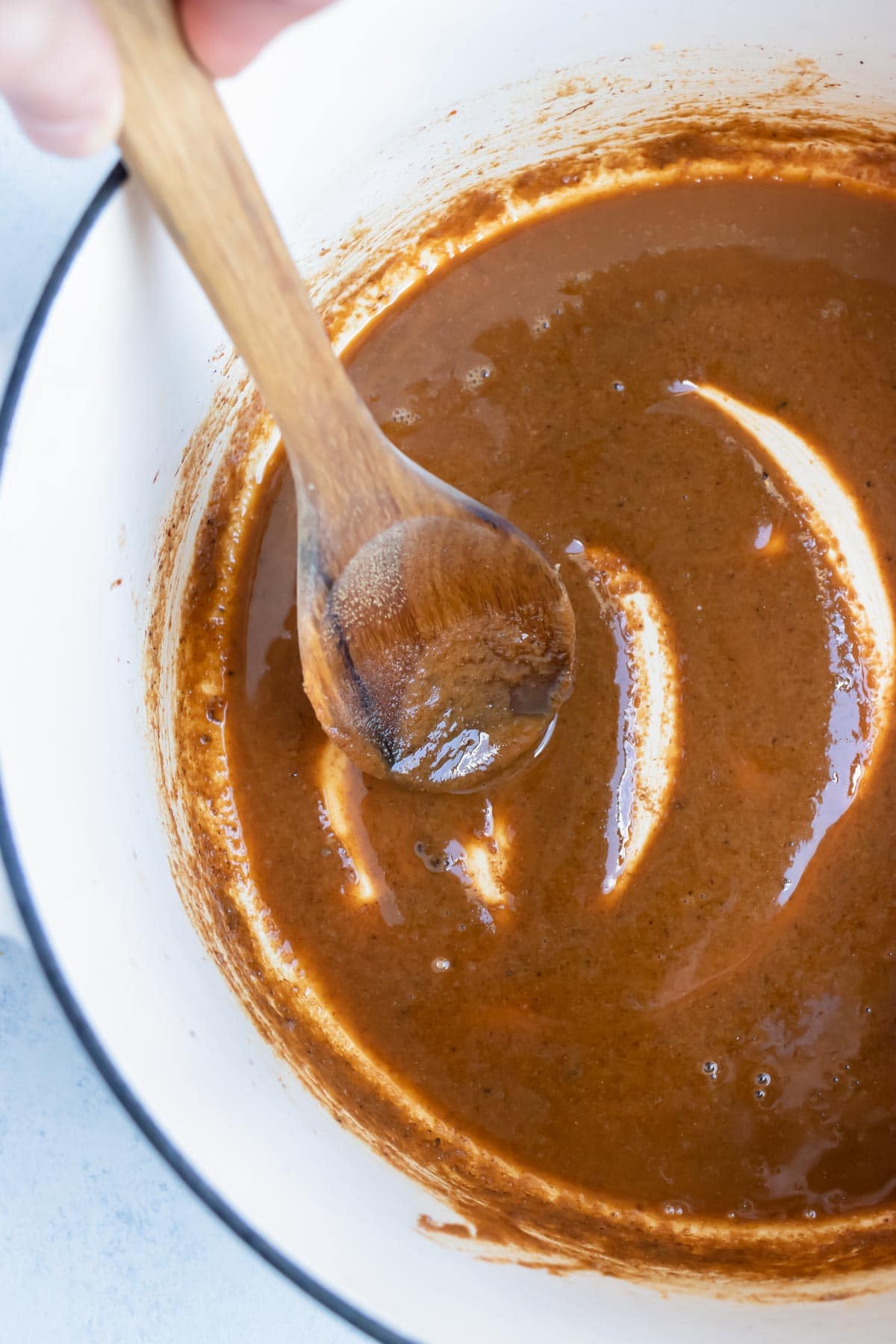
Making a Roux from scratch doesn’t have to be that hard or complicated.
In fact, once you learn the basic steps you’ll be able to easily whip up a white or blonde roux to use in creamy white sauces, or a dark chocolate brown roux to add TONS of flavor to a Shrimp and Sausage Gumbo recipe!
Use it all up right when you make it or store some for up to a month in the refrigerator.
And runny or bland rouxs? You can say goodbye to them because you’ll learn some tips and tricks to make an ultra thick roux or a flavor-packed kind.

Ingredients
The simple ingredients you need to make this Roux recipe include:
- Flour. Regular all purpose flour works the best and it can be bleached or unbleached. Some gluten-free all purpose blends will work but not all of them.
- Bob’s Red Mill 1-to-1 definitely doesn’t! If your gluten-free roux isn’t thickening up, just know that it’s not you – it’s probably the type of flour you’re using!
- Fat. Butter and oil are the most commonly used fats. Salted butter, vegetable oil, olive oil, or even peanut oil are all great options. But other animal fats, such as bacon fat, lard, and sausage drippings, may also be used.
How to Make a Roux
The basic steps for making a roux are simple to follow. Please see the recipe card below for more detailed ingredient amounts.
Melt the Butter
Place a saucepan, skillet or Dutch oven over medium-low heat. If you use a large pot be sure to keep a close eye as it can burn more quickly.
Add the butter or oil and wait for it to start sizzling slightly.
Stir in the Flour
Sprinkle the flour into the butter and begin stirring immediately.
Use a wire whisk if you are making your roux in a metal pan, or a wooden spoon if making it in a ceramic-coated one.
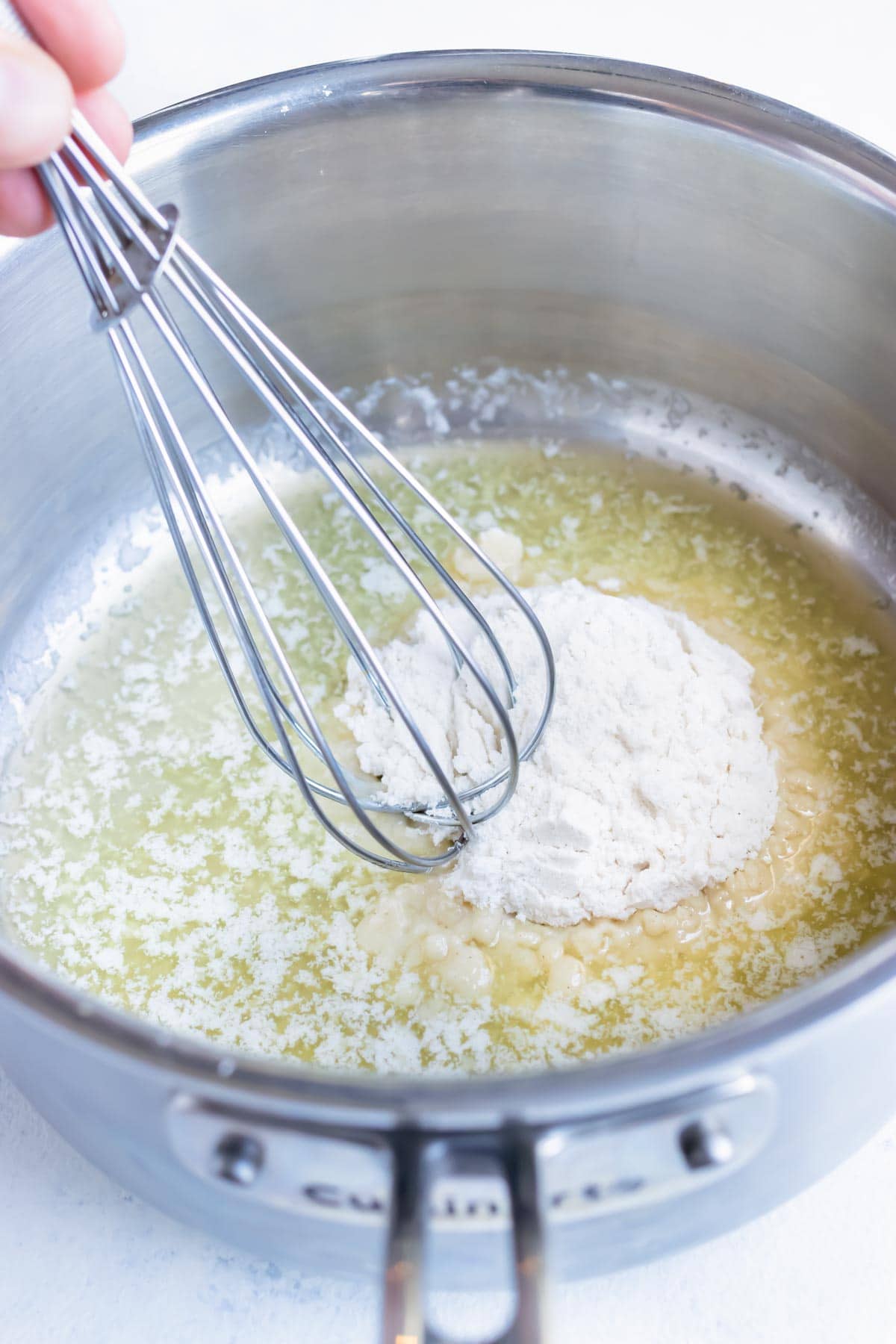
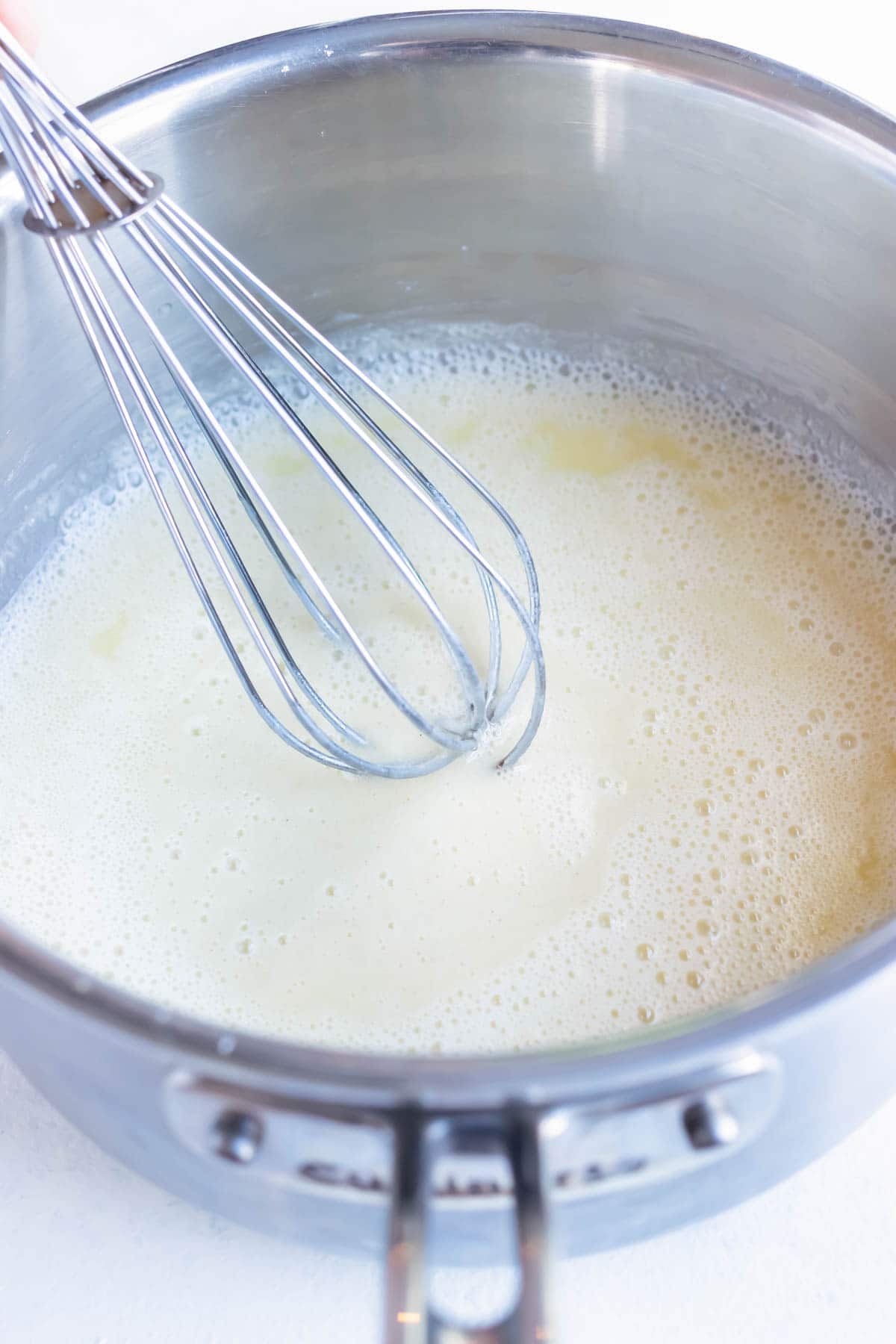
White Roux (2-3 Minutes)
The roux will begin to thicken up rather quickly. Keep stirring constantly at this point to prevent it from burning.
This stage is called a white roux and is great to use as a thickening agent for sauces, soups or stews.
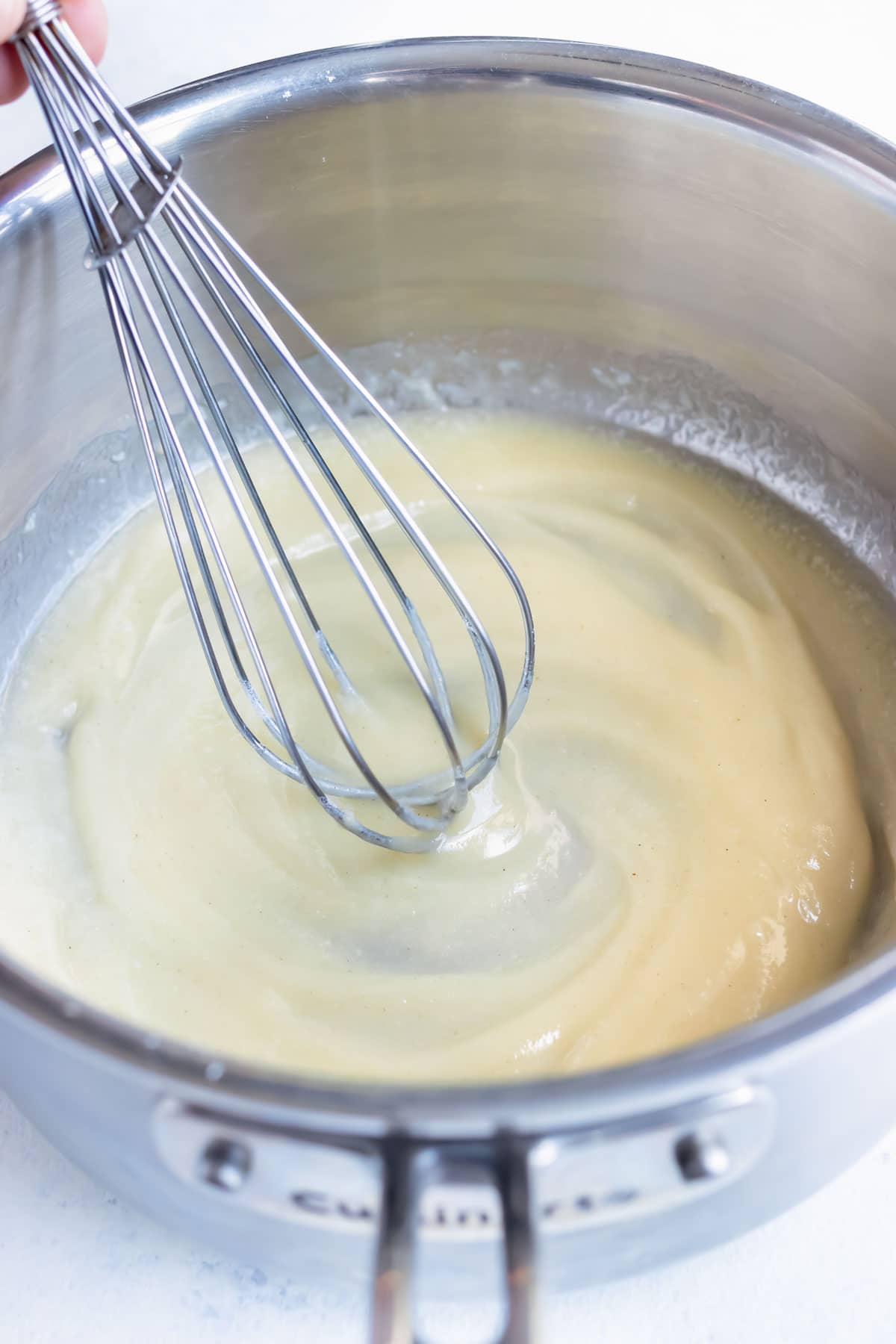
Blonde Roux (3-5 Minutes)
The roux will start to thin out slightly after a few minutes and you can slow down how often you’re stirring it.
After 3-5 minutes you will have what’s called a blonde roux.
This can be used to make creamy and lightly-colored sauces such as a béchamel or a sausage gravy.
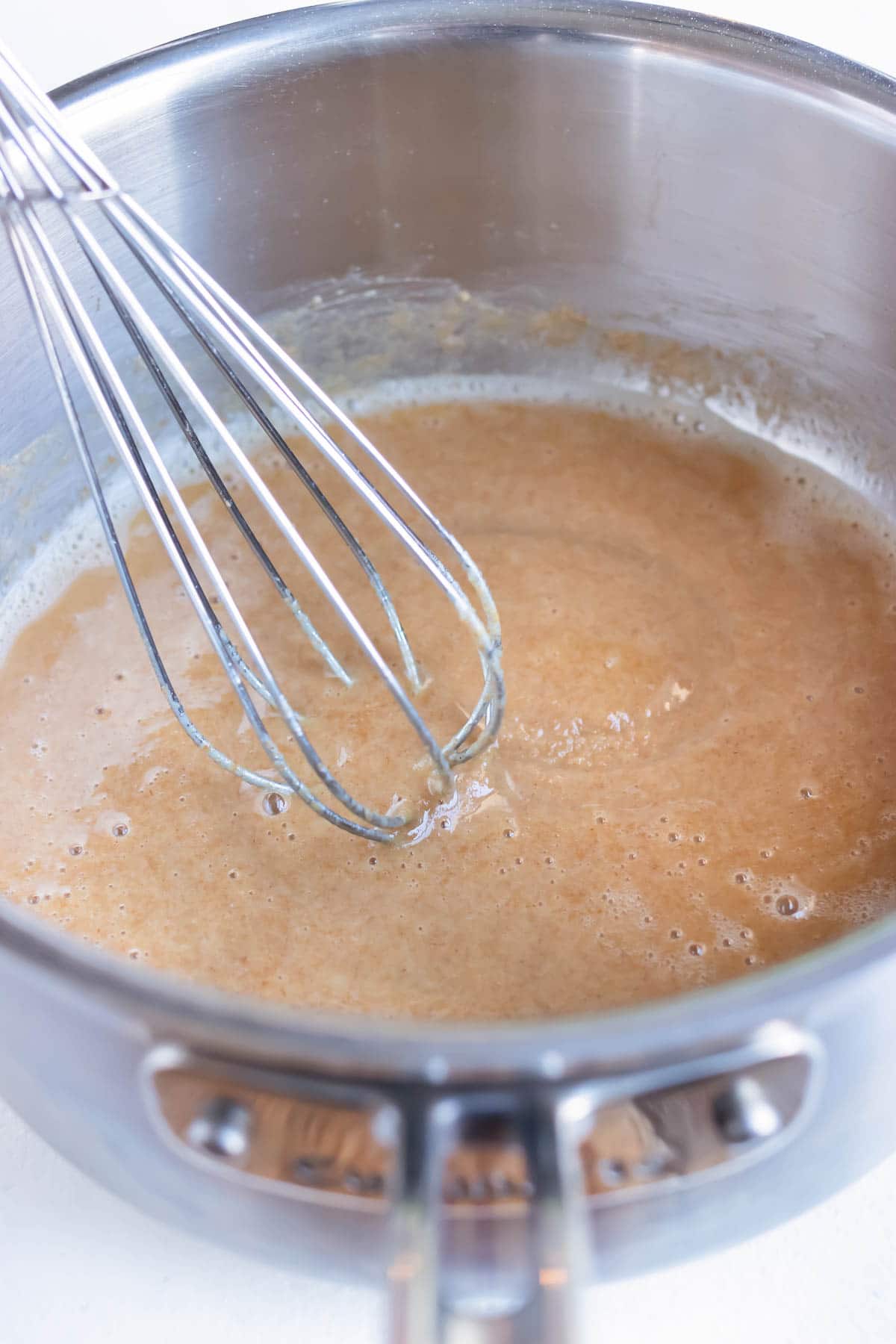
Light Brown Roux (10-15 Minutes)
To get a darker colored roux continue cooking it for another 5-25 minutes.
After 10-15 minutes of cooking you will have a milk chocolate-colored roux.
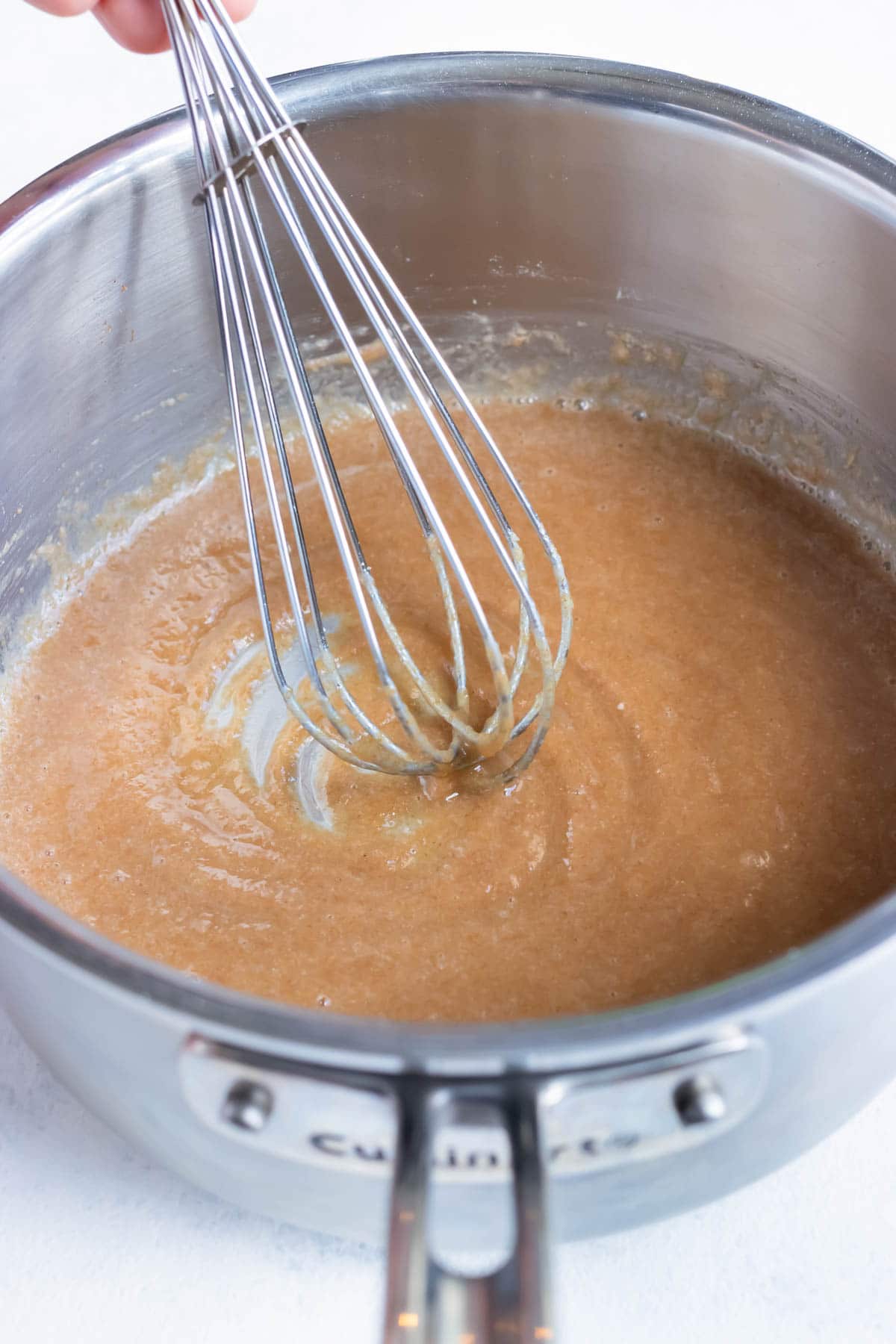
Dark Brown Roux (20-30 Minutes)
Continue simmering and stirring for another 10 minutes or so, totally about 20-30 minutes. The mixture will continue to get really dark and develop a ton of flavor the longer you cook it.
If you have the time, you can even cook your roux for up to an hour!
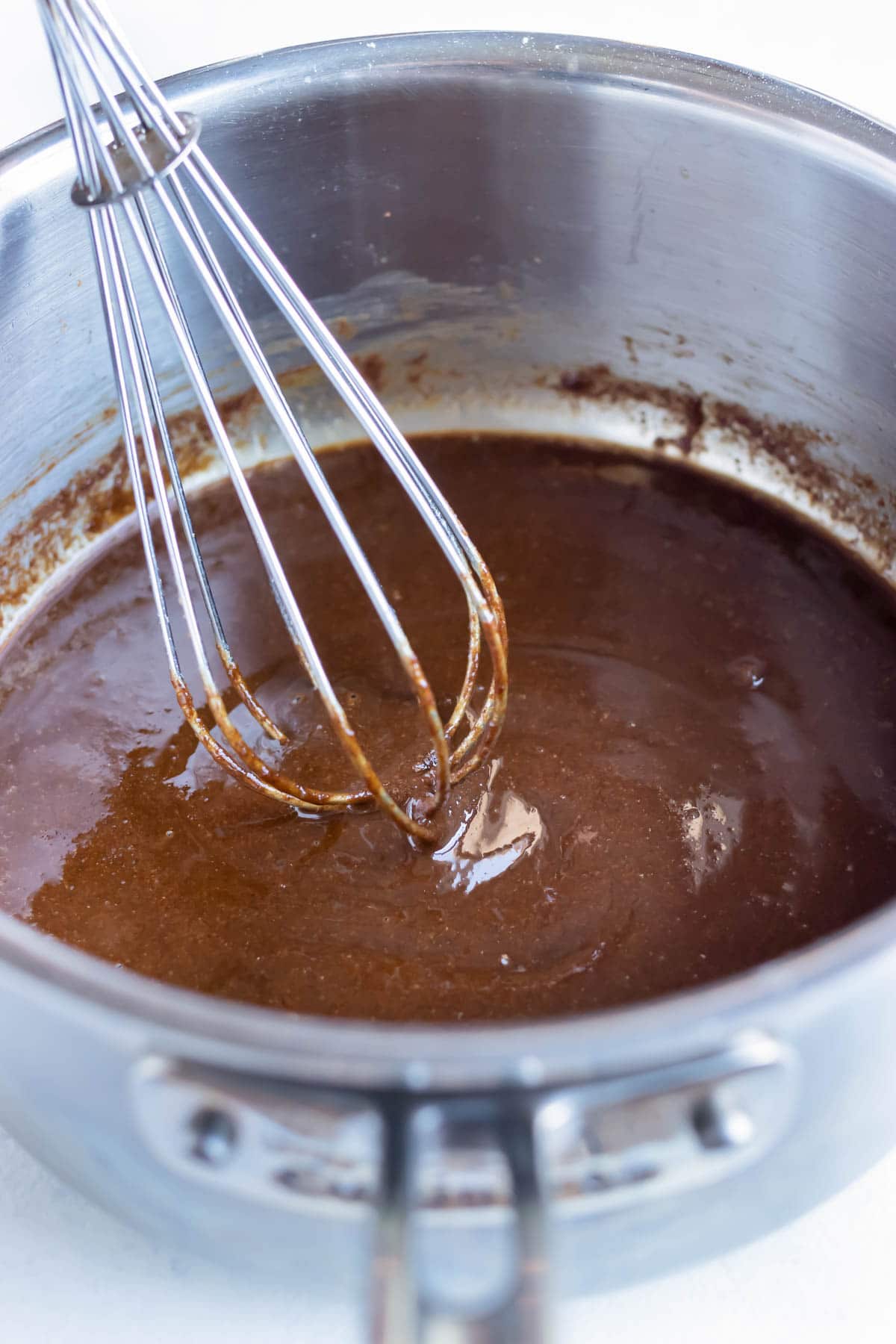
Storing
- To Store: Keep in an airtight container in the refrigerator for up to 1 month.
- To Freeze: Seal in a freezer-safe airtight container in small increments for up to 1 year.
FAQs
A roux is composed of flour and fat and is used to either thicken sauces or flavor soups and stews.
The typical ratio for a roux is equal parts flour and fat.
Rouxs can be white, blonde, or brown in color with their flavor intensity increasing as they darken. However, the thickening ability of roux is inversely proportional to its flavor potential. So a white roux has a stronger thickening ability while a brown roux will only slightly thicken sauces and stews.
The most common culprit for a roux not thickening up is the type of flour. Regular all purpose flour is the best to use. Gluten-free and Paleo mixes do not tend to clump up as easily as gluten-filled varieties and may result in a runny roux.
The heat from the stove is what helps turn a roux that deep, chocolate brown color typical of a gumbo roux. If your roux isn’t to your desired color yet, simply crank up the stove to medium heat and give it some more time to achieve the perfect dark roux.
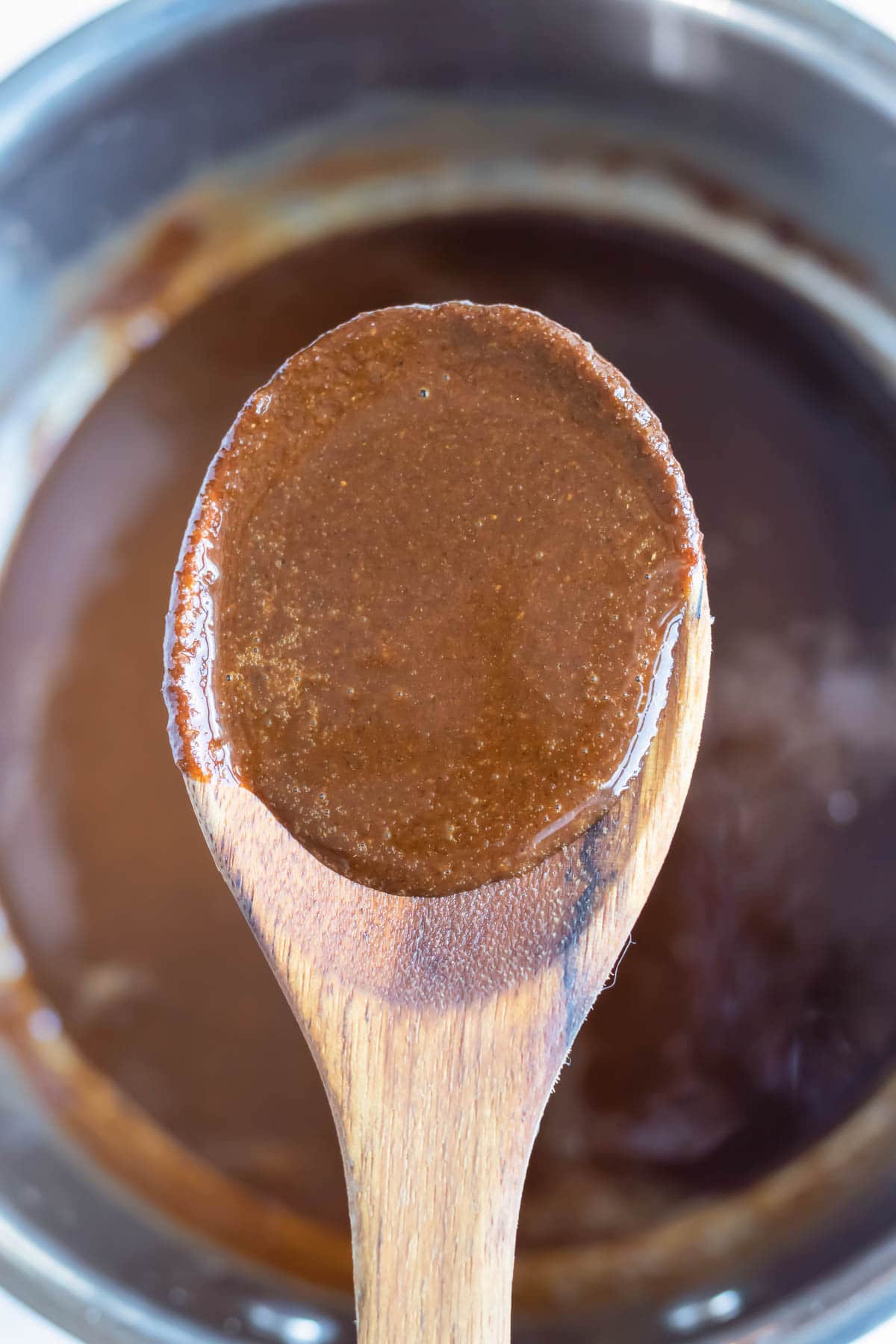
Expert Tips and Tricks
- Use the right type of roux. Dark rouxs have the most flavor, while light rouxs have more thickening power.
- Check the size. Larger pots could burn the roux more easily so keep a close eye and stir often.
- Make extra. Freeze your roux to have on hand for sauces, gravy, or soups any time.
- Add flavor. Choose a fat such as bacon grease to elevate the taste.
How to Use Roux
You can use your white, blonde, or brown roux in any of the following dishes:
Instant Pot Chicken Vegetable Soup
Tap stars to rate!
How to Make a Roux for Gumbo
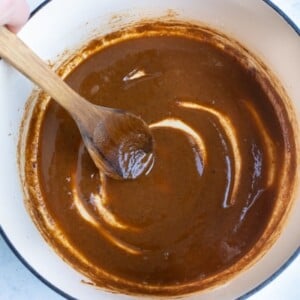
email this recipe!
Ingredients
- ½ cup butter or oil*
- ½ cup flour all purpose*
Instructions
- Place a saucepan, skillet or Dutch oven over medium-low heat.
- Add ½ cup of butter or oil. If using butter, let it melt completely and wait for it to start sizzling slightly.
White Roux:
- Sprinkle in ½ cup of flour and begin stirring immediately. Keep stirring constantly to prevent it from burning. (This stage is great to use as a thickener for soups and sauces.)
Blonde Roux:
- The roux will start to thin out slightly after a few minutes and you can slow down how often you’re stirring it.
- After 3-5 minutes you will have what’s called a blonde roux. (This can be used to make creamy and lightly-colored sauces such as a bechamel or a sausage gravy.)
Light Brown Roux:
- To get a darker colored roux continue cooking it for another 5-25 minutes.
- After 10-15 minutes of cooking you will have a light brown roux.
Dark Brown Roux:
- Continue cooking for a total of 25-30 minutes, to get a dark brown roux. (This is perfect for a homemade gumbo recipe!)
- Store any leftover roux in an airtight container in the refrigerator for up to a month.
Tap stars to rate!
Video
Notes
- Feel free to use salted or unsalted butter.
- Be careful if using a gluten-free substitute as these do not thicken up as easily as regular flour.
- To Store: Keep in an airtight container in the refrigerator for up to 1 month.
- To Freeze: Seal in a freezer-safe airtight container in small increments for up to 1 year.
Nutrition
Nutrition information is automatically calculated, so should only be used as an approximation.

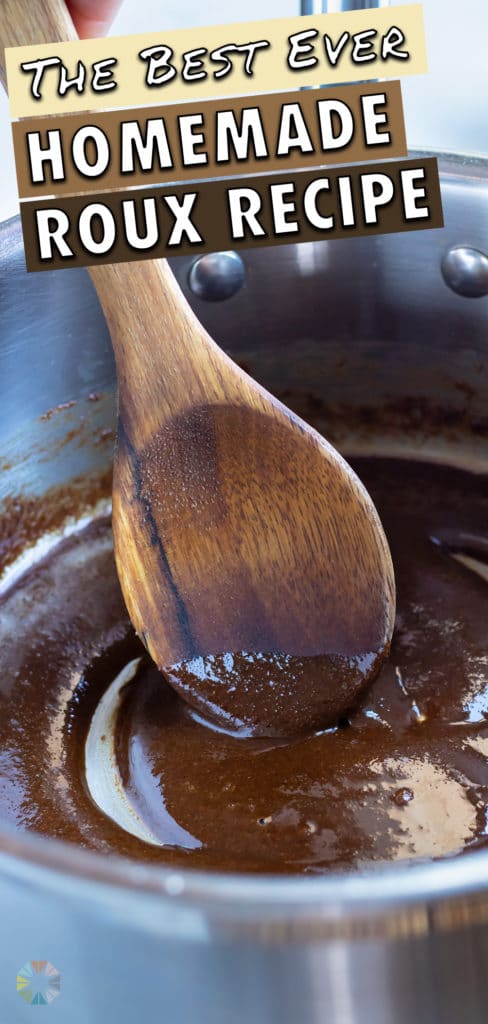














Why does my roux separate from the oil?
Hmm. It could be that it was cooked too long, or at too high of a temperature.
I have tried a few gluten-free flours in the past to make roux, but most either did not make a good roux or were not flavorful enough. Sweet Rice Flour work best of the ones I tried. Do you have any gluten-free flour suggestions?
Hi Jeff! Great question. I have yet to find a really good gluten-free flour to make a roux, but agree with you that sweet rice flour works pretty decently. I normally just use regular all purpose flour since we do not have any major gluten issues in our household!